Al Qeyada: A New World Inside of a Country
On this day last month, Sudan witnessed a deadly attack on peaceful protesters when Rapid Support Forces (RSF) and other paramilitary forces raided the monthslong mass sit-in in Al Qeyada in front of the headquarters of the Sudanese Armed Forces (SAF), leaving at least 120 people dead and more than 300 injured.
The deadly raid, which took place on 3 June 2019 and triggered the worldwide #BlueforSudan hashtag, brought an end to the highly celebrated mass sit-in in Al Qeyada – the beacon of the Sudanese revolution. 500 Words Magazine writer Rahba El Amin reflects on Al Qeyada and commemorates its significance to the ongoing Sudanese revolution.
The first “Million March”
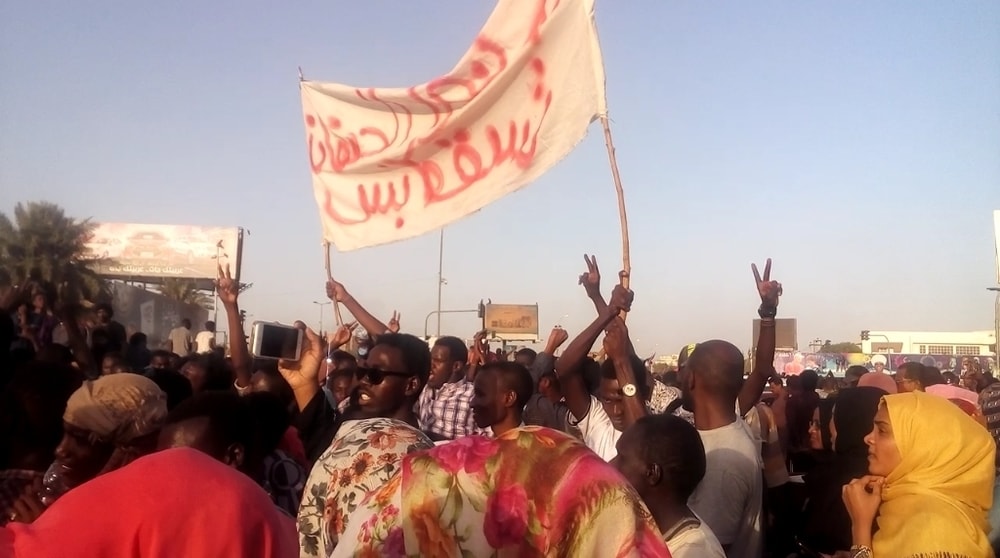
Protesters marching to the HQ of SAF on 6 April chanting, “ثوار احرار حنكمل المشوار”, which translates to, “We are free revolutionists, we will complete our journey“. Image credit: Rahba El Amin
In the last week of March 2019, the Sudanese Professionals Association (SPA), called on protesters to join a mass demonstration dubbed as the “Million March” towards the HQ of SAF. The widely announced mass protest was to be held on 6 April 2019, aiming to bring at least one million protesters out on the streets of Sudan to demand the step down of the then Sudanese President Omar Al Bashir and his regime.
Around noon on 6 April, thousands gathered within their neighbourhoods at planned meeting points and marched through the dusty streets of Khartoum towards SAF, whilst calling for “Freedom, peace and justice…the revolution is the choice of the people” and “Tasgut bas!“, which translates to “Just fall. That is all!” People had taken to the streets drawn by an impulse to be close to others, linked not just by patriotism but by a suffering that had long consumed them since the dictator Al Bashir came into power in 1989.
As hundreds of thousands marched to SAF, singing and shouting chants that leaked meanings of resilience and hope, having overcome the hurdles of tear gas and gunshots, many were in disbelief that they had reached SAF and broke down in tears. All words fall short of ever accurately describing the way joy spilled into the streets that day. The march was significant in two ways: It was the biggest mass demonstration of the Sudan revolution; and it was the first march to successfully reach its destination.
As I was one of the hundreds of thousands that marched to SAF on 6 April, it wasn’t until I sat down that I was finally able to take in the crowd, or at least try to. Looking at their faces, I could only notice the long history of endurance and resilience that surfaced beneath their smiles, tears and chants.
Sudan and its revolution had arrived at a defining moment. We gathered because we had chosen hope over fear, and unity of purpose over silence. That day, as we stood on the sacrifices of hundreds of martyrs who died in past peaceful protests, chants in their name spread like wildfire across protestors, etching them into a living memory. In the coming days, would be dedicated to commemorating the fallen, covered in banners, paintings and information about them and how they died.
Al Qeyada
We’d learn later that nearly a million people arriving from all parts of the capital had flooded around SAF. A sea of diversity, energy and hope now occupied almost one square mile of downtown Khartoum.
What began as a march during the day turned into a sit-in overnight. Protesters were off and running eager on the chance they had to step beyond the failures of a 30-year dictatorship and prioritise the needs of their country through voicing their rights. In the days and nights to come, thousands of protesters would camp outside the HQ of SAF, demanding the fall of the regime.
At the sit-in, a new world was made out of a country. Walking in, you heard the steady drumbeats of rocks banging on metal. The din, which only stopped once a day for the national anthem to be sung, came to be known as the beat of the revolution.
I was floored by what people were bringing in terms of enthusiasm and involvement. People from across the country sent in supplies so protestors had enough food and water. Medical and dental services were established for and by protesters. In no time, tented campsites were set up and stages were built for performances and speeches. Protesters loaded with idealism and aspirations were given spaces where they could discuss and debate political issues. In other areas, people gathered more causally around tea ladies to discuss the issues of the day.
Libraries on-site gave people access to books and homeless children bubbled with hope as they received literacy classes. Decades of repressed creativity were unleashed; dance, music, poetry, theatre and street art became the new forms of resistance. These arts narrated the story of our country, napping together the disparate pieces of our identity as a nation, writing it into wholeness.
As chats about the sit-in became embedded in almost every conversation, a Facebook page called “Humans of the Military Headquarters” was set up, gaining over 21,000 followers. The page narrates stories of revolutionists who fell victim to the government’s brutal forces, reflecting their larger spirit of fortitude, loyalty and bravery.
When government forces responded to the sit in with live ammunition, protestors stood their ground and never left, defying all attempts to disperse the demonstration. When Al Bashir was overthrown in a military coup on 11 April 2019, the sit-in was the venue for celebrations. Whenever negotiations between the military council and protestors stalled, marches to the sit in were called.The sit in grounded us when we fell into disappointments, lifted us in our celebrations and reminded us of our active role in making change happen.
Gone but never forgotten
The sit-in came to an abrupt end on 3 June. The regime, nervous about the uprising, sent soldiers to raid the monthslong mass sit-in at the crack of dawn. Soldiers, who outnumbered the protesters that morning on the 29th day of the holy month of Ramadan, opened fire on protesters who, as they tried to flee, screamed and stumbled on makeshift barricades they had set up to guard the sit-in against such an attack. As the troops advanced, they set fire to tents and beat anyone they could get their hands on. More than 120 people were killed that day. At least 40 bodies were pulled out of the Nile River where paramilitary forces attempted to dispose of dead bodies – some protesters, whether dead or alive, were thrown into the river with stones tied to their feet. In addition, since that brutal raid, the ruling Transitional Military Council (TMC) has cut off almost all internet and phone services.
The violent dispersal of the sit-in was not only a mockery of and dismissiveness to the Sudanese revolution, but a massacre; a crime against humanity that crippled the Sudanese people as it mourned in silence during the last days of Ramadan, through Eid Al Fitr and until today, one month later.
Youth representing the promise of the coming generation of leaders who helped Sudanese see the value in the larger story of their nation, had died that day supporting the freedom of a country they deeply loved.
The sit-in changed us all. It had given me real faith that change was possible. It was a subtle reminder that we were a force as a nation and that are worth was measurable. At the sit-in were vibrant advertisements for what this generation could do. There, our footsteps echoed, we were seen and heard.
The sit-in may be gone but memories of it will forever dominate the next decades of our lives, pulsing like a drumbeat behind almost everything we do as we strive to see a free Sudan in our lifetime.
 Rahba El Amin is a fourth year medical student at the University of Khartoum, trying to do her little bits of good everywhere she goes. She is a blogger, book-worm, aspiring writer, photographer and human rights activist — who can’t live without shai bei laban.
Rahba El Amin is a fourth year medical student at the University of Khartoum, trying to do her little bits of good everywhere she goes. She is a blogger, book-worm, aspiring writer, photographer and human rights activist — who can’t live without shai bei laban.

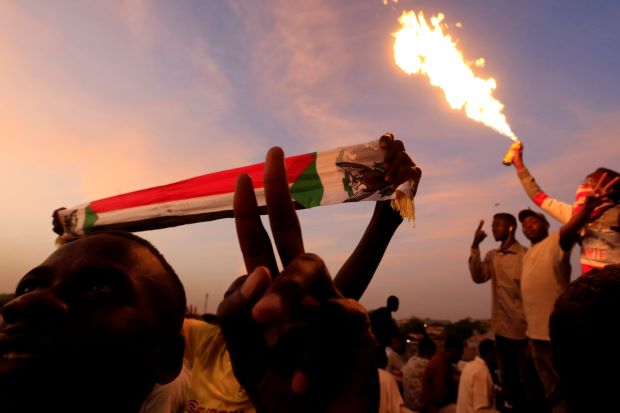
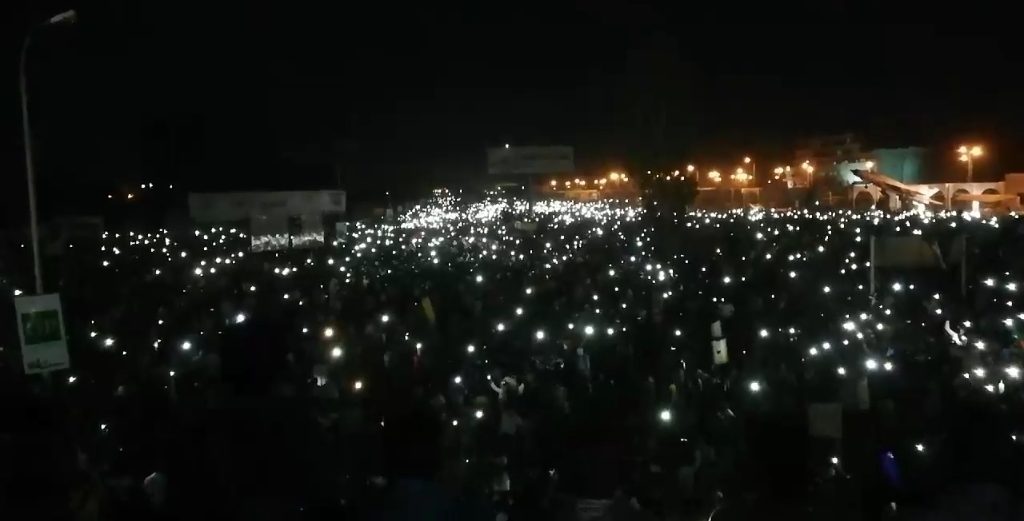
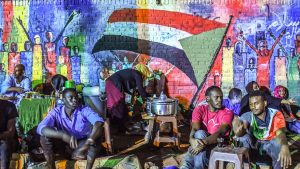
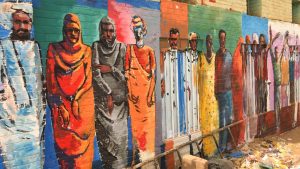
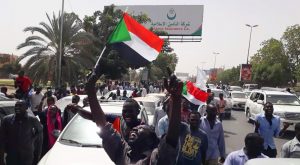
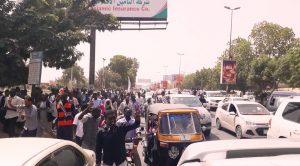
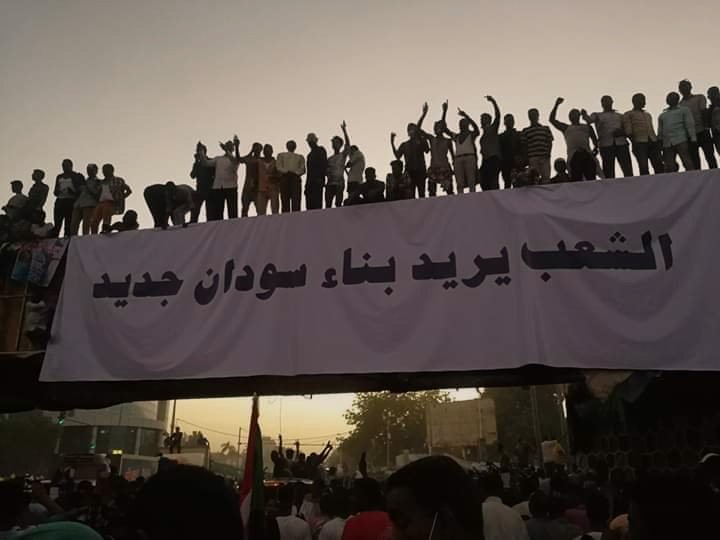
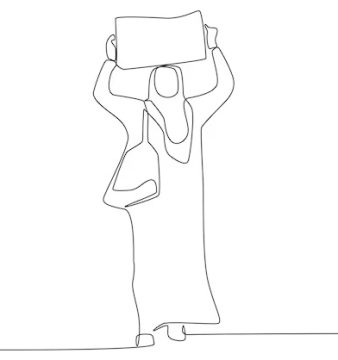
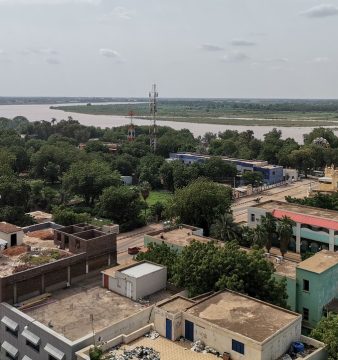


[…] Link to article: https://500wordsmag.com/miscellaneous/al-qeyada-a-new-world-was-made-out-of-a-country/ […]